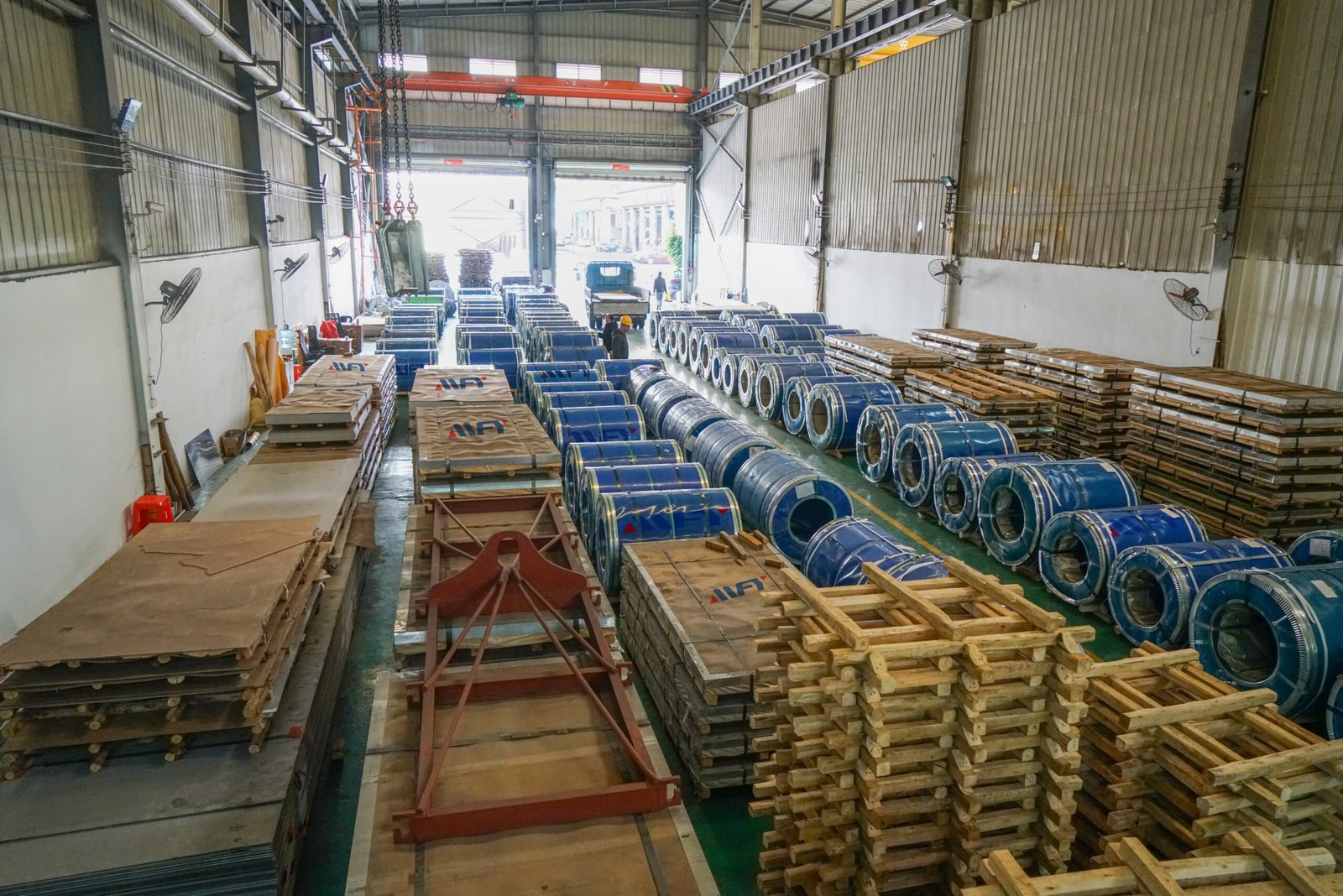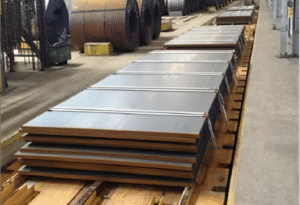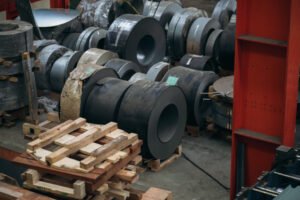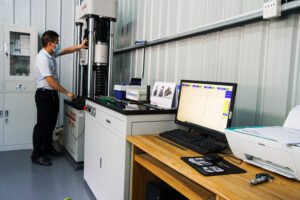ASTM A240 против EN 10088: сравнение стандартов листов из нержавеющей стали

Are you navigating the complexities of international projects and feeling uncertain about which stainless steel standard to specify? Choosing incorrectly between ASTM A240 and EN 10088 can lead to compliance issues, material rejection, and costly project delays, putting your reputation and budget at risk.
ASTM A240 and EN 10088 stainless steel standards are leading international standards for stainless steel sheets. ASTM A240 is the predominant American standard, while EN 10088 is the mandatory European Norm. They differ primarily in their grade designations, chemical composition ranges, and certain mechanical property requirements.
The technical specifications on a project blueprint are more than just numbers; they are the language of engineering and compliance. Getting this language right is non-negotiable. I often speak with clients who are expanding into new global markets and find themselves at this critical crossroads, needing to understand the subtle but crucial differences between these two standards.
This isn’t just an academic exercise. An incorrect specification can bring a multi-million dollar project to a grinding halt. Imagine fabricating equipment in Asia for a client in Germany, only to have it rejected at the port because the material certificates reference ASTM grades instead of the required EN equivalents. At MFY, our role extends beyond supplying steel; we help our clients navigate these complexities to ensure global compliance and supply chain integrity. Let’s delve into the details of each standard to provide clarity.
What are the key specifications of ASTM A240 standard for stainless steel sheets?
Is your project bound by North American or related international engineering codes? If so, the ASTM A240 standard is likely your go-to specification, but overlooking its specific requirements can lead to non-compliant material sourcing. Understanding its core components is essential for ensuring quality and compliance.
The ASTM A240 standard specifies requirements for chromium and chromium-nickel stainless steel sheets for general applications and pressure vessels. It defines mandatory chemical compositions, mechanical properties (like tensile and yield strength), heat treatment protocols, and dimensional tolerances for numerous grades like Type 304 and 316 stainless steel sheets.
As the bedrock of stainless steel specification in many parts of the world, a deep understanding of ASTM A240 is fundamental to our business at MFY. I recall working with a new engineering contractor based in the United States who was bidding on their first major international project in the Middle East. Their blueprints were entirely based on ASTM standards, as is common practice for U.S. firms. They needed a reliable supplier who not only understood their requirements for A240 Type 316L sheets but could also provide the exhaustive documentation—from Mill Test Certificates (MTCs) to heat treatment records—that the end client demanded. Their previous local suppliers couldn't offer the combination of scale, rapid export delivery, and meticulous documentation required. We were able to step in, not just as a supplier, but as a compliance partner, ensuring every sheet we delivered was fully certified and traceable according to A240 specifications. This experience highlights that the standard is more than a technical reference; it's a framework for trust and quality assurance in the global supply chain.
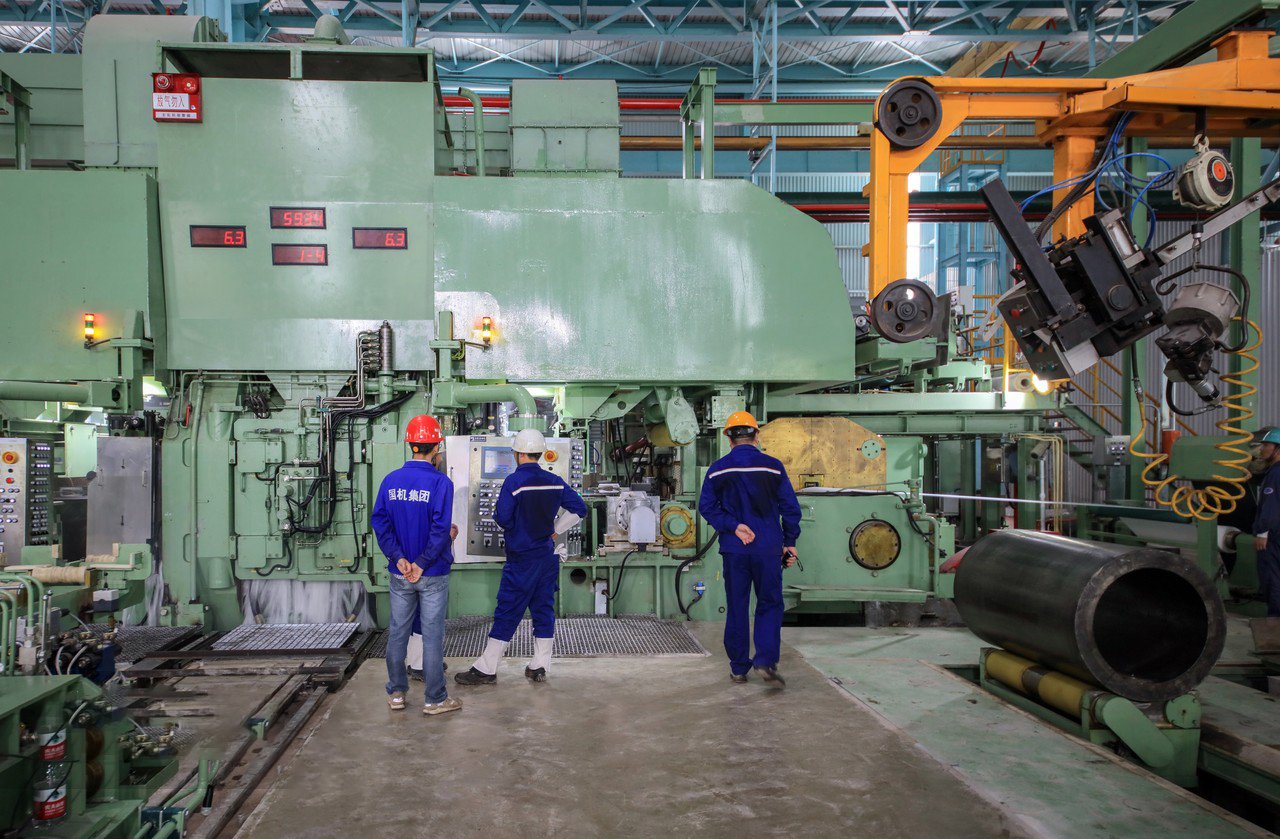
ASTM A240, developed by the American Society for Testing and Materials, is one of the most widely recognized standards globally for stainless steel plate, sheet, and strip. Its comprehensive nature is what gives it authority, but it also means that buyers and engineers must pay close attention to its details to ensure their material is fit for purpose and compliant with project requirements. A critical analysis of its components reveals a robust system for quality control.
The Foundation: Chemical Composition
At the heart of the ASTM A240 standard is a series of tables that meticulously define the chemical composition for each stainless steel grade. This is the material's fundamental DNA. The standard dictates the required weight percentages for key elements like chromium (for corrosion resistance), nickel (for ductility and stability), and molybdenum (for enhanced resistance to pitting corrosion), as well as setting maximum limits for impurities like carbon, manganese, phosphorus, and sulfur. For example, for the ubiquitous Type 304 grade, A240 specifies a chromium content of 18.0-20.0% and a nickel content of 8.0-10.5%.
These ranges are not arbitrary. They are the result of extensive testing and are designed to ensure the material will perform as expected under specific service conditions. The maximum carbon content, for instance, is critical. For A240 Type 304, the limit is 0.08%, while for the low-carbon variant, Type 304L, it is a much lower 0.03%. This lower carbon content is crucial for welded applications to prevent sensitization (chromium carbide precipitation at grain boundaries), which can lead to intergranular corrosion. As a supplier, our quality control process begins here, with rigorous chemical analysis of every batch to certify its conformity to these precise A240 requirements.
This chemical precision is what allows engineers to confidently specify a material for a particular environment. A client building desalination plant equipment, for instance, will require a grade with high molybdenum content, like Type 316L (2.0-3.0% Mo), for its superior resistance to chloride-induced corrosion. A material that deviates from the A240 chemical composition, even slightly, could lead to premature failure in such a harsh environment.
Performance Under Pressure: Mechanical Properties
While chemistry defines the material, mechanical properties define how it performs. ASTM A240 clearly outlines the minimum required mechanical properties that the finished stainless steel sheet must exhibit at room temperature. The three primary metrics are Tensile Strength (the maximum stress a material can withstand while being stretched), Yield Strength (the stress at which the material begins to deform permanently), and Elongation (a measure of the material's ductility, or its ability to stretch before breaking).
For an engineer designing a structural component or a pressure vessel, these values are non-negotiable. For instance, ASTM A240 requires Type 304 stainless steel sheets to have a minimum tensile strength of 75 ksi (515 MPa) and a minimum yield strength of 30 ksi (205 MPa). Our production processes, from cold rolling to annealing, are carefully controlled to achieve these properties. The heat treatment (annealing) process is particularly critical, as it relieves internal stresses from rolling and recrystallizes the grain structure to ensure optimal strength and ductility.
We validate these properties through rigorous physical testing in our labs for every production lot. The results are documented on the Mill Test Certificate (MTC), which provides our clients with traceable proof that the material meets the strength and safety factors specified in their designs. For a company building components like storage tanks or support brackets, receiving a sheet that is below the minimum yield strength could have catastrophic consequences.
Ensuring Fit and Finish: Dimensions and Tolerances
ly, ASTM A240 provides a framework for physical consistency through its specifications on dimensional tolerances and surface finish. The standard sets acceptable ranges for thickness, width, length, and flatness. This ensures that a buyer ordering a 1.5mm thick sheet receives material that is consistent and within a predictable, very narrow tolerance range. This is critical for automated manufacturing processes, where significant variations in thickness could disrupt machinery and affect the quality of the final product.
The standard also references standard surface finishes, though these are often described more explicitly in other ASTM documents like A480. These finishes range from a dull, scaled mill finish (No. 1) to a highly reflective, buffed finish (No. 8 Mirror). The most common general-purpose finish is the No. 4, a brushed polish often seen in kitchen appliances and architectural trim.
A client in the architectural sector, for example, relies on the consistency of the No. 4 finish for visual uniformity across large building facades. A distributor needs to know that the thickness of the sheets they stock is within the A240 tolerance so they can confidently sell to a wide range of fabricators. At MFY, our integrated processing capabilities allow us to deliver sheets that not only meet the chemical and mechanical requirements but are also precisely cut and finished to these exacting dimensional standards, ensuring the material is ready for immediate use upon arrival.
ASTM A240 defines chemical compositionПравда
The standard precisely specifies weight percentages of key elements like chromium and nickel for each grade.
Type 304L has higher carbon than 304Ложь
304L has lower maximum carbon content (0.03%) compared to standard 304 (0.08%) to prevent sensitization.
How does EN 10088 standard define stainless steel sheet requirements?
Are you targeting the European market or working on a project with EU-based engineering partners? Then the EN 10088 standard is not just an option, it's a legal requirement. Failure to comply can result in your products being denied entry into the entire European Economic Area.
The EN 10088 standard is the European Norm that specifies the technical delivery conditions for stainless steel sheets, plates, and strips. It is structured in several parts, defining chemical compositions, mechanical properties, surface finishes, and a distinct numerical and name-based grading system (e.g., 1.4301 / X5CrNi18-10).
Adherence to EN 10088 is a cornerstone of our export strategy at MFY, particularly for our clients in the European Union and those supplying projects governed by European engineering firms. I have a long-standing relationship with an equipment integrator in Germany who fabricates high-end machinery for the pharmaceutical industry. For them, compliance is absolute. Every single component must adhere to EN standards, and the documentation must be flawless. They rely on us to supply stainless steel sheets, like grade 1.4404 stainless steel1 (the EN equivalent of 316L), that are fully compliant with EN 10088-2. They don't just need the material; they need the assurance that comes with a certificate referencing the correct EN grade names, numbers, and test methods. This is a level of detail that many suppliers overlook. Understanding that EN 10088 is not just a technical document but a passport for market access in Europe is key to our ability to serve these demanding clients effectively. It demonstrates a commitment to their market's specific regulatory landscape.
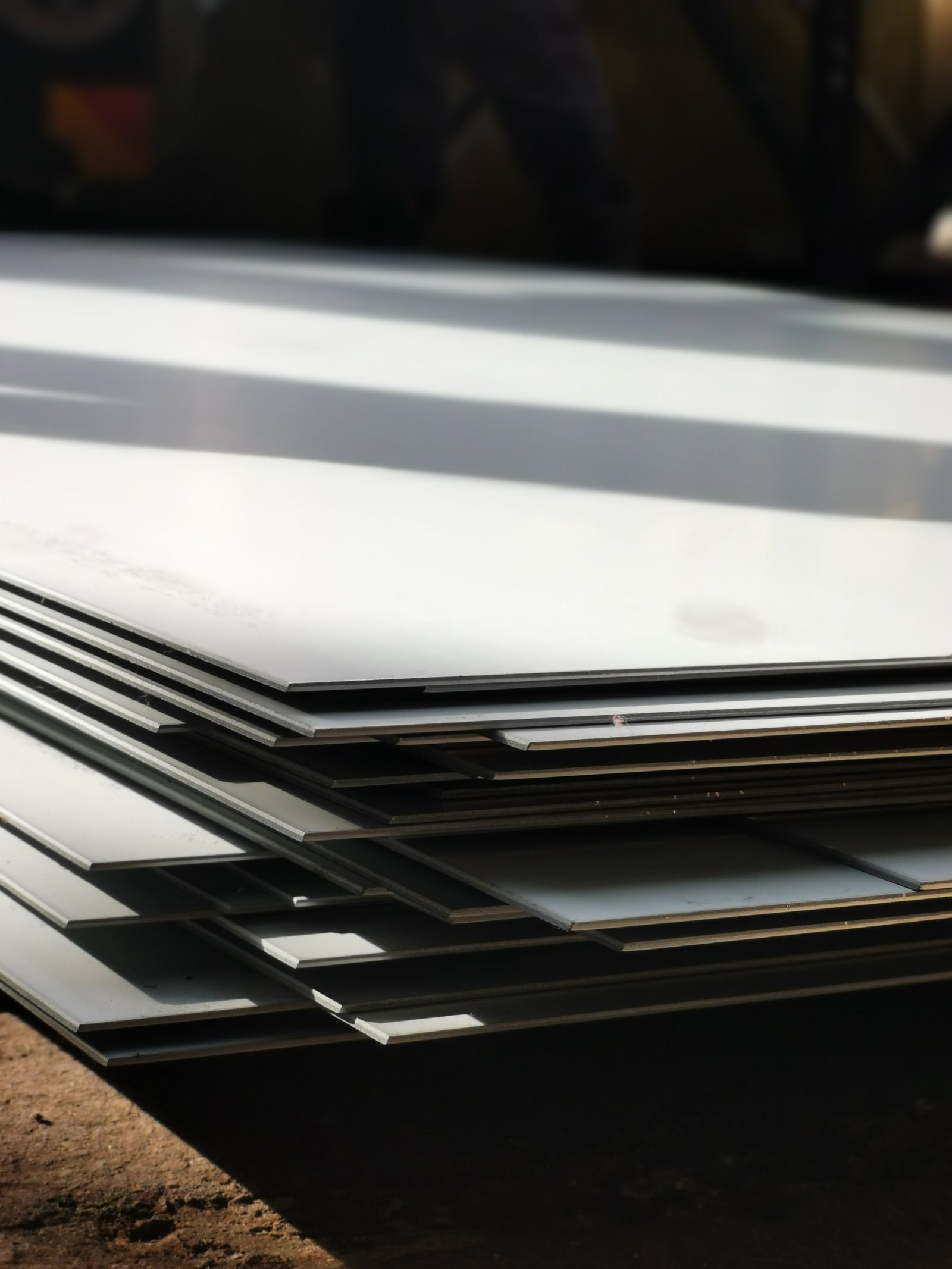
The European Standard EN 10088 is a comprehensive and mandatory framework for any stainless steel product intended for sale or use within the European Union and many other regions that have adopted European norms. It is divided into several parts, with EN 10088-2 specifically covering sheet, plate, and strip for general purposes. Its systematic approach to classification and specification is a hallmark of European industrial standards.
A Dual System for Grade Identification
A key feature of the EN 10088 standard is its dual-designation system for grades, which provides both a descriptive name and a unique number. This system is logical and highly structured. The steel name, for example X5CrNi18-10, gives direct information about the material. In this case, 'X' signifies a high-alloy steel, '5' indicates the carbon content (0.05%), 'CrNi' identifies the primary alloying elements (Chromium and Nickel), and '18-10' indicates their approximate percentages. This nomenclature is highly descriptive for metallurgists and engineers.
Alongside the name is the steel number, such as 1.4301. This number is arguably more important for trade and data processing. The '1' indicates it is a steel, and the '43' in this context signifies a corrosion-resisting steel with specific alloying elements. The final two digits are a sequential counter. This numerical system is unambiguous and ideal for inventory management, ordering, and certification. For our clients, like the German equipment integrator, purchase orders and MTCs must feature both the name and the number to be considered fully compliant. This structured system minimizes ambiguity, which is critical in high-stakes industries like pharmaceuticals or construction.
This dual system is a significant departure from the simpler grade names of the ASTM system (e.g., 304). While initially more complex, it provides a greater level of immediate information to a trained eye and facilitates precise identification within the highly regulated European market.
Distinct Specifications for Mechanical Properties and Finishes
Like ASTM A240, EN 10088-2 meticulously specifies the required mechanical properties, including proof strength (equivalent to yield strength), tensile strength, and elongation. However, the specific minimum values and the conditions under which they are tested can differ from ASTM standards. For example, EN 10088-2 often specifies properties for different product thicknesses, acknowledging that the mechanical properties of a thin sheet can differ from those of a thick plate due to the effects of rolling and processing.
Furthermore, EN 10088-2 has its own detailed system for classifying surface finishes. While an ASTM No. 4 finish is common, the EN standard uses designations like '2J' or '2K' for similar brushed or ground finishes, but with more specific requirements regarding the process and resulting surface roughness (Ra value). For architectural or food-grade applications, these specific surface roughness values can be a critical design parameter to ensure cleanability or desired aesthetic. For example, a '2K' finish requires a transverse Ra of <0.5 µm, a level of detail not always explicitly stated in the general ASTM finish guides.
At MFY, our production and quality control teams are trained to work to both sets of standards. Our cold-rolling mills and polishing lines can be calibrated to produce sheets that meet the specific surface roughness and mechanical strength requirements of EN 10088-2, ensuring our products are fit for the most demanding European applications.
Emphasis on "Fitness for Purpose" and CE Marking
A core principle underlying EN 10088 is its role within the broader European regulatory framework, particularly the Construction Products Regulation (CPR). For stainless steel sheets to be used in construction applications within the EU, they must carry a CE Mark. Obtaining this mark requires the manufacturer to issue a Declaration of Performance (DoP), which confirms the product's conformity with the harmonized standard—in this case, EN 10088.
This places a significant burden of proof on the manufacturer. It's not enough to simply produce steel that meets the technical specifications; we must also have a certified Factory Production Control (FPC) system in place that is audited by a Notified Body. This system ensures that our manufacturing processes are consistent and that our products reliably meet the declared performance characteristics. The CE Mark is, therefore, a guarantee to the market that the product is not only technically compliant but also legally cleared for its intended use.
For a construction contractor in Europe, specifying and receiving CE-marked stainless steel is a legal necessity. As a non-European manufacturer, MFY has invested heavily in achieving the necessary certifications to apply the CE Mark to our products. This commitment is a clear demonstration of our dedication to serving the European market and understanding its unique regulatory demands, providing our clients with the peace of mind that comes from full compliance.
EN 10088 uses dual grade identificationПравда
The standard employs both numerical (e.g. 1.4301) and name-based (e.g. X5CrNi18-10) grading systems for precise material identification.
ASTM and EN surface finishes are identicalЛожь
EN 10088 uses different designations (like 2J/2K) with more specific surface roughness requirements than ASTM's general finish guides.
In what ways do ASTM A240 and EN 10088 standards differ from each other?
You know that 304 and 1.4301 are used for similar jobs, but do you know if they are truly identical? Assuming direct interchangeability between ASTM and EN grades is a common but risky oversimplification that can lead to unexpected performance issues or compliance failures.
ASTM A240 and EN 10088 differ significantly in their grade designation systems (e.g., '304' vs. '1.4301 nomenclature). They also feature subtle but critical variations in the allowable ranges for chemical composition and minimum required values for mechanical properties like yield and tensile strength.
The most frequent question I get from clients who are new to global sourcing is, "Can I just substitute one for the other?" The answer is always, "It depends." While many ASTM and EN grades are considered "equivalents," they are rarely "identical." I once worked with a client manufacturing high-pressure fittings for the oil and gas industry. They were used to working with ASTM A240 Type 316L. For a new project with a European partner, they were asked to use EN 10088 Grade '1.4404 differences'2. While the two are very similar, the EN standard for that specific application required a slightly higher minimum proof strength. Had they simply supplied their standard ASTM material, it would have been non-compliant. This small difference had major implications for the project's safety and certification. This real-world example underscores why a detailed, side-by-side comparison is not just for engineers, but is essential for any procurement manager, distributor, or business director operating in the international steel trade. Understanding these nuances is key to mitigating risk.
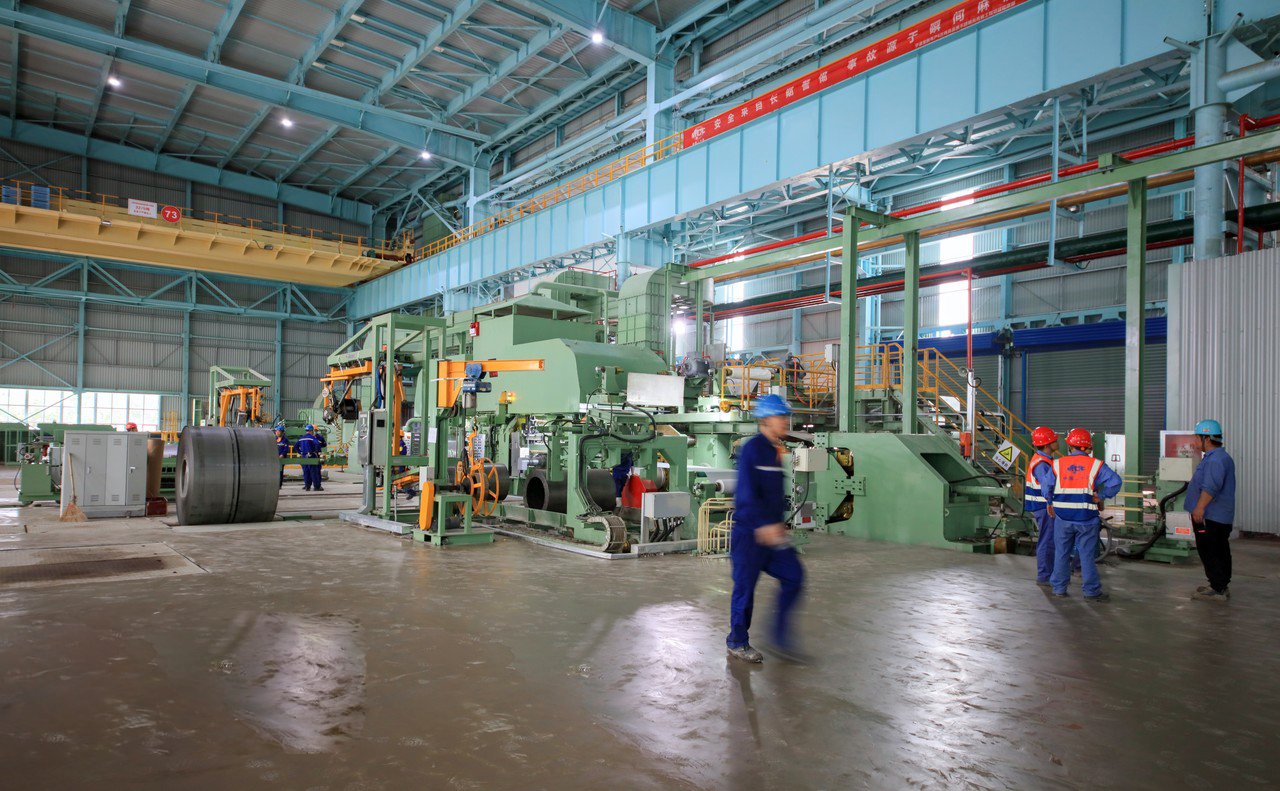
While both ASTM A240 and EN 10088 aim to ensure the quality and performance of stainless steel, they achieve this through different terminologies, philosophies, and specific technical requirements. A granular comparison reveals that the differences, while sometimes subtle, are significant enough to impact material selection, product performance, and regulatory compliance. Ignoring these distinctions can be a costly mistake.
The Naming Game: Grade Designations
The most immediate and obvious difference is the system of nomenclature. ASTM uses a simple, widely known three-digit system (e.g., 300 series for austenitic steels, 400 series for ferritic/martensitic). These numbers are household names in the industry—everyone knows "304" or "316". This system is straightforward but provides little information about the steel's composition on its own.
In stark contrast, EN 10088 employs the dual system of a descriptive name (e.g., X5CrNi18-10) and a non-descriptive number (e.g., 1.4301). As discussed, the name provides a quick chemical summary, while the number offers a unique, language-agnostic identifier perfect for digital systems. A project manager in Poland and an engineer in Spain can both order "1.4301" and know they are getting the exact same material specification, eliminating any linguistic confusion. This structured approach is a hallmark of German-led DIN standards, from which many EN standards evolved. While the ASTM system is arguably simpler to learn, the EN system is more precise and self-descriptive once understood.
This difference is more than cosmetic. The required MTCs and product certifications must use the correct designation for the specified standard. Supplying an ASTM-certified sheet for an EN-specified project (or vice-versa) will almost certainly lead to rejection during quality inspection, even if the underlying material is chemically and mechanically very similar.
A Tale of Two Chemistries: Compositional Variances
While popular grades like ASTM 304 and EN 1.4301 are functional equivalents, their specified chemical ranges are not identical. These subtle differences can affect properties like weldability or corrosion resistance in specific environments. For example, the EN standard often allows for a slightly different range of certain alloying elements. Let's compare two common grades:
| Элемент | ASTM A240 316L | EN 10088-2 1.4404 | Ключевое различие |
|---|---|---|---|
| Углерод (C) | 0.030% max | 0.030% max | Identical max limit |
| Хром (Cr) | 16.0 - 18.0% | 16.5 - 18.5% | EN has a slightly higher minimum and range |
| Никель (Ni) | 10.0 - 14.0% | 10.0 - 13.0% | ASTM allows for a higher maximum Ni content |
| Molybdenum (Mo) | 2.0 - 3.0% | 2.0 - 2.5% | EN has a tighter, lower maximum Mo range |
| Nitrogen (N) | 0.10% max | 0.10% max | Identical max limit |
As the table shows, Grade 1.4404 has a slightly higher minimum Chromium content but a tighter and lower Molybdenum range compared to 316L. While these differences may seem minor, for a highly corrosive application where maximum molybdenum content is desired for pitting resistance, an engineer might specifically prefer a material certified to ASTM A240 316L that was produced at the higher end of its Mo range. Conversely, the tighter specification of the EN standard might be seen as providing greater consistency.
These small shifts in chemistry can influence a material's behavior. The higher potential nickel content in ASTM 316L could offer slightly better ductility. These are fine points, but in high-performance applications—aerospace, medical, or specialized chemical processing—these nuances can be the deciding factor in material selection.
Strength and Form: Mechanical and Dimensional Differences
The divergence continues into mechanical properties. While often close, the minimum specified values for yield strength (or proof strength in EN terms) and tensile strength can vary. For the 304/1.4301 family, the minimum tensile strength under ASTM A240 is 515 MPa, whereas under EN 10088-2, it is also 520-720 MPa for thicknesses up to 8mm in the annealed condition. These are very close, but other grades can show more significant deviation.
More pronounced differences can be found in dimensional and tolerance standards. ASTM A240 primarily references ASTM A480 for tolerances on plate, sheet, and strip. The European equivalent is EN ISO 18286 for plates and EN ISO 9445 for cold-rolled strip and sheet. These standards can have different allowable deviations for thickness, width, and flatness. For companies using automated laser cutting or forming equipment, these tolerance differences can be critical. A machine calibrated for the tolerances of ASTM-spec material may behave differently with EN-spec material, potentially affecting processing speeds and final product quality.
Ultimately, the choice is not about which standard is "better," but which is "correct" for the application. As a global supplier, our role at MFY is to be fluent in both languages. We must be able to produce, test, and certify to either standard with equal precision, providing our clients with material that is not just equivalent, but perfectly compliant with their specific project requirements.
ASTM and EN use different naming systemsПравда
ASTM uses simple three-digit numbers (e.g., 304) while EN uses descriptive chemical names (e.g., X5CrNi18-10) plus numerical identifiers (e.g., 1.4301).
316L and 1.4404 have identical chemistryЛожь
While similar, EN 1.4404 has higher minimum chromium (16.5% vs 16.0%) and tighter molybdenum limits (2.0-2.5% vs 2.0-3.0%) compared to ASTM 316L.
What factors should industries consider when choosing between ASTM A240 and EN 10088?
Are you facing a choice between ASTM and EN standards for your next project? This decision goes far beyond the technical specifications; it has direct implications for your project's legality, budget, and supply chain resilience. Making an informed choice requires a commercial and logistical perspective.
Industries must consider several factors when choosing a standard. The primary driver is the project's geographical location and governing law (e.g., EU requires EN standards). Other key factors include client specifications, supply chain availability in the region, and interoperability with existing components or systems.
The most critical factor in this decision is nearly always dictated by the end-user and the location of the project. I constantly advise our clients, especially distributors and traders, to make this the first question they ask. "Where is this material ultimately going, and what does the final client's contract specify?" A client of ours who distributes steel in Southeast Asia learned this lesson well. They were supplying a contractor building a factory for a German automotive company. While the project was in Thailand, the engineering was German, and the contract explicitly mandated EN 10088 standards3 and CE-marked materials for all structural components. Had our distributor partner assumed the local standard or the more common ASTM grade was acceptable, their shipment would have been rejected, causing a major disruption. This shows that the choice is often made for you. The key is to have a supply partner, like MFY, who can reliably deliver to either specification, removing that variable from your risk assessment. Your job is to win the contract; our job is to ensure you can deliver on it, compliantly.

Choosing between ASTM A240 and EN 10088 is a strategic decision with significant downstream consequences. While engineers focus on the technical merits, business directors and procurement managers must weigh a broader set of commercial, regulatory, and logistical factors. A holistic evaluation is crucial to prevent costly errors and ensure seamless project execution from material sourcing to final installation.
The Non-Negotiable: Regulatory and Contractual Compliance
The single most important factor is the legal and contractual framework of the project. This is not a point of negotiation. For any construction project within the European Union, the Construction Products Regulation (CPR) mandates the use of CE-marked materials, which for stainless steel sheets means compliance with the harmonized standard EN 10088. Using ASTM A240 material, regardless of its quality, would be illegal for such applications. Similarly, many projects in the United States, particularly those involving public infrastructure or adhering to codes like the ASME Boiler and Pressure Vessel Code, will explicitly require ASTM materials.
This extends beyond national borders. A European company building a plant in Asia or the Middle East will often specify EN standards in their contracts to maintain consistency with their global engineering practices. Conversely, a US-based EPC (Engineering, Procurement, and Construction) contractor will typically use ASTM standards as their global default.
Therefore, the first step for any stakeholder—be it a manufacturer, contractor, or distributor—is to scrutinize the project contract, blueprints, and applicable local regulations. The choice of standard is fundamentally a question of compliance. At MFY, our export team is trained to request and review these specifications to ensure we are quoting and supplying the correct, compliant material from the outset.
The Practical Choice: Supply Chain Availability and Cost
Assuming a project's contract allows for either standard (a rare but possible scenario), the next consideration is purely practical: which material is more readily available and cost-effective in the project's supply chain? In North America, stainless steel sheets compliant with ASTM A240 are ubiquitous. Sourcing EN 10088 compliant material might be more difficult and command a premium from local stockists. The reverse is true within the European Union.
For projects in "neutral" territories like the Middle East or parts of Asia, the market may be supplied with material certified to both standards. Here, the choice can come down to the sourcing strategy. As a major Chinese producer, MFY has the capability to produce and certify to both standards efficiently. This allows our clients in these regions to source the specific standard their project requires without a significant cost penalty.
This is a key advantage for our target clients. A distributor in India, for example, can use MFY as a single-source supplier for both their ASTM-spec and EN-spec customer needs. This simplifies their procurement, reduces their supplier base, and allows them to serve a broader market, from local fabricators to contractors working on international projects, without having to take a gamble on availability from different sources.
The Engineering Imperative: Interoperability and Design Life
ly, from an engineering and long-term asset management perspective, the choice of standard impacts interoperability and maintenance. If a new piece of equipment must be integrated into an existing production line, it is crucial that the materials are compatible. Using a different standard could introduce subtle differences in material properties that might affect performance, or more practically, create headaches for future maintenance and repair.
Imagine a food processing plant in Southeast Asia originally built using equipment specified to ASTM 304L. If a new tank is added five years later and fabricated from EN 1.4307, the maintenance team now has to be aware of the two different material types. While they are functionally very similar, their MTCs and traceability documents will be different. For industries with stringent quality control like food or pharma, managing multiple standards within one facility can add unnecessary complexity to their compliance and validation protocols.
Therefore, the principle of consistency is key. Whenever possible, projects should adhere to a single standard throughout their lifecycle to simplify procurement, installation, and long-term maintenance. When our clients are unsure, our technical team often recommends they default to the standard that is most prevalent in their primary customer's industry or region to ensure the broadest compatibility for their finished products.
EN 10088 is mandatory in EU projectsПравда
The Construction Products Regulation (CPR) requires CE-marked materials like EN 10088 for legal compliance in EU construction.
ASTM and EN standards are interchangeableЛожь
While chemically similar, these standards have different certification requirements and legal implications that prevent direct substitution.
What are expert recommendations for selecting the right standard for stainless steel sheets?
With all the technical details and regional variations, how do you make the final call with confidence? Choosing the right stainless steel standard shouldn't feel like a leap of faith. By following a clear, logical process, you can eliminate guesswork and ensure you make the right choice every time.
Experts recommend a simple hierarchy for selection: first, strictly adhere to the project's contractual and legal requirements. Second, consult with your material supplier to confirm availability and proper certification. Finally, always prioritize consistency with existing infrastructure to ensure long-term interoperability.
In my role at MFY, I see myself not just as a supplier, but as a guide through the complexities of the global steel market. My primary recommendation is always to start with the "source of truth": the project's official engineering specifications4 and contractual documents. This single step prevents 90% of potential errors. I had a client, a very capable equipment integrator, who was about to order a large quantity of ASTM A240 316L for a water treatment facility. During our kickoff call, I simply asked if he could share the technical specification section from the end-client's contract. He did, and we discovered a small but critical clause specifying that all materials must comply with EN standards due to the project's European funding. This simple check saved him from ordering tons of non-compliant steel. This proactive, collaborative approach is essential. Don't assume. Always verify, and lean on the expertise of your supply chain partners. We are here to help you get it right before the steel is even rolled.
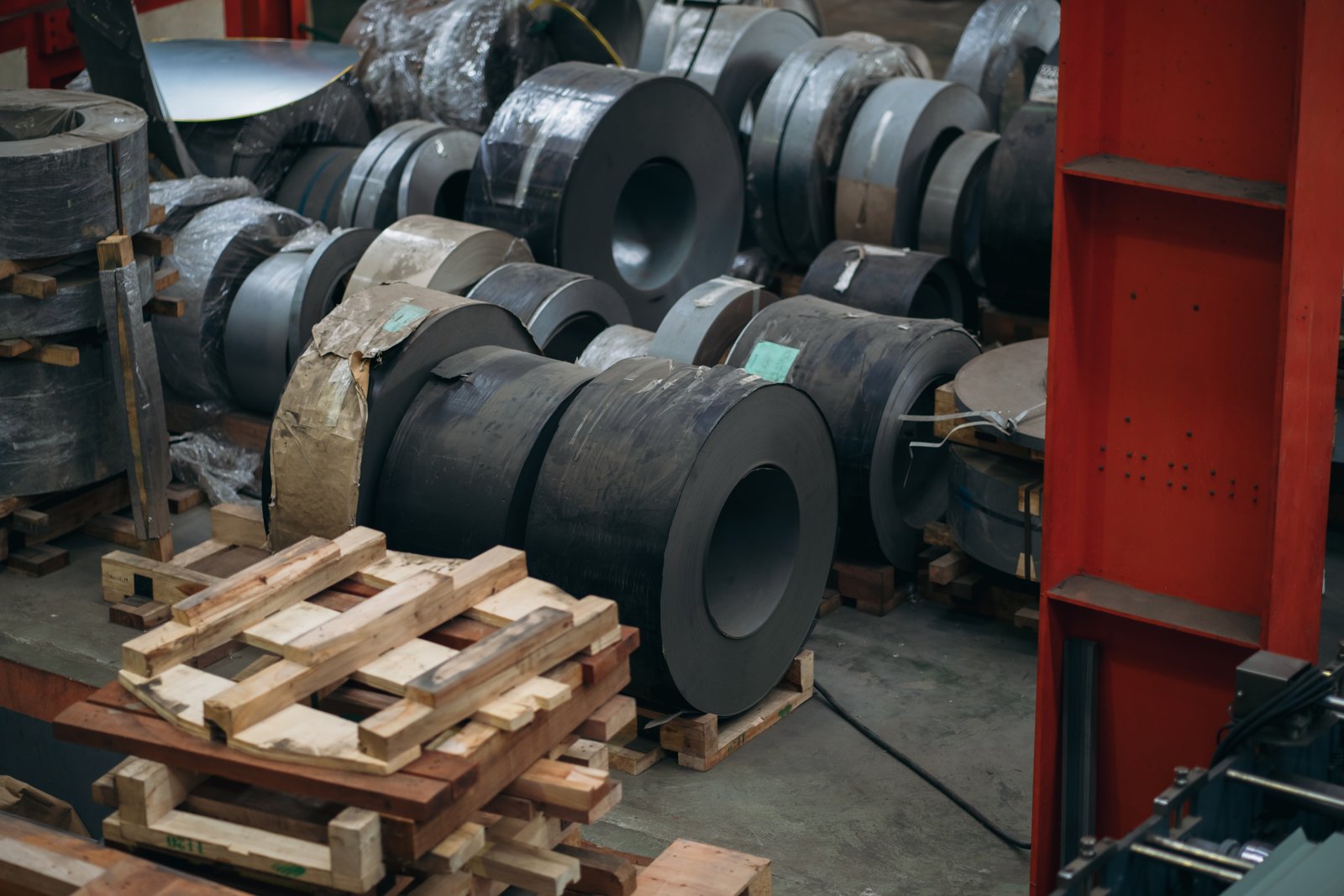
Selecting the appropriate stainless steel standard is a critical decision point that hinges on a blend of regulatory adherence, technical suitability, and strategic sourcing. As experts in the field, our recommendations are designed to create a simple yet robust decision-making framework for our clients. This framework minimizes risk, ensures compliance, and optimizes the supply chain for efficiency and reliability.
Golden Rule: The Specification is Sovereign
The absolute, unshakable first step is to identify the governing specification for the project. This is not a matter for debate or supplier preference. The answer lies within the project's own documentation. Engineers and procurement managers must meticulously review all contractual documents, engineering drawings, and quality assurance plans5. The standard—be it ASTM A240, EN 10088, or another national standard—will almost always be explicitly stated.
If the standard is specified, the choice is made. The task then shifts from selection to verification. The focus becomes ensuring your chosen supplier can provide the material with the correct, fully compliant documentation. This means requesting a sample Mill Test Certificate (MTC) to see if it references the correct standard, grade designation, and testing methods. For instance, if EN 10088 is required, the MTC should clearly state "EN 10088-2" and list the grade as "1.4404 / X2CrNiMo17-12-2".
My team and I make this a mandatory part of our quoting process. We ask the client to confirm the governing standard, and we provide them with sample documentation to demonstrate our capability to comply. This principle of "trust but verify" should be the foundation of any professional procurement process. Never proceed on an assumption when the facts are available in the project documents.
The Collaborative Check: Engage Your Supplier Early
Once the standard is identified, the next step is to engage with your material supplier. A knowledgeable supplier is more than a vendor; they are a technical resource. This is the point at which to discuss the nuances of your requirement. For example, if your project requires EN 10088 but you have a specific performance characteristic in mind that you are used to achieving with an ASTM grade, discuss this with the supplier's technical team.
This collaborative dialogue can uncover important details. A good supplier can explain any subtle differences in performance between the specified EN grade and its ASTM equivalent. They can also confirm their ability to meet specific testing or documentation requirements. I once worked with a contractor who needed EN-compliant material but also required an additional, non-mandatory ultrasonic test to be performed. Because they communicated this early, we were able to integrate this extra quality control step into our production plan and provide the supplementary certification they needed.
This proactive communication builds a partnership and prevents last-minute surprises. It transforms the supplier relationship from purely transactional to a collaborative one focused on risk mitigation. Use your supplier's expertise. As a manufacturer with a global footprint, we at MFY have seen thousands of specifications and can often provide valuable context or confirm best practices for your specific application and region.
The Filter: Don't Assume "Equivalent" Means "Identical"
Finally, a crucial expert recommendation is to always treat "equivalent" grades with caution. While tables that cross-reference ASTM and EN grades are useful for initial orientation, they should never be used as a basis for direct substitution without approval from the project engineer or end client. As we've detailed, grades like ASTM 316L and EN 1.4404 are not identical. They have slight differences in their allowable chemical ranges and may have different minimum mechanical properties.
The key question to ask is: "Do these differences matter for my specific application?" For a non-structural, decorative application, the differences are likely irrelevant. But for a high-pressure, high-temperature, or highly corrosive environment, these small variations could be critical to the material's performance and design life.
Therefore, if a substitution is ever considered—perhaps due to a sudden availability issue—it must be subject to a formal technical review and approval process by the responsible project engineer. As a supplier, we would never make such a substitution unilaterally. We would flag the potential alternative to our client, provide the detailed technical data for both grades, and recommend they seek formal engineering approval before proceeding. This disciplined approach protects the integrity of the project and the interests of all stakeholders.
Project specifications are mandatoryПравда
The governing standard for stainless steel must always be taken from the project's contractual documents, not supplier preferences.
Equivalent grades are identicalЛожь
ASTM and EN equivalent grades often have different chemical compositions and mechanical properties that may impact performance.
Заключение
Ultimately, the choice between ASTM A240 and EN 10088 is dictated by project requirements. Understanding their key differences in composition, properties, and nomenclature is crucial for ensuring compliance, performance, and legality. A knowledgeable supply partner like MFY is essential for navigating these global standards successfully.
-
Узнайте о свойствах и соответствии нержавеющей стали 1.4404 стандарту EN 10088. ↩
-
Узнайте о критических различиях в механических свойствах, необходимых для соответствия требованиям и безопасности применения ↩
-
Узнайте о важности EN 10088 в европейских проектах по строительству сооружений ↩
-
Узнайте, как спецификации определяют выбор стандартов материалов для вашего проекта ↩
-
Узнайте, как проектная документация обеспечивает соответствие материалам и качество ↩
У вас есть вопросы или нужна дополнительная информация?
Свяжитесь с нами, чтобы получить индивидуальную помощь и квалифицированный совет.
